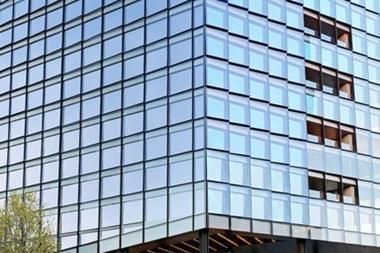The M25 office market enjoyed an increasing in lettings last quarter of 2008, despite the worsening economic outlook, according to Knight Frank’s latest report.
Take up increased by 10% on the third quarter in the M25 region to 646,216 sq ft and 9% in the M3 corridor to 356,342 sq ft.
In the M4 market, take up in the final quarter was 13% down on the third quarter at 1.88m sq ft.
Take up for the year as a whole, at 2.75m sq ft, was 15% below the 10 year annual average of 3.22m sq ft.
Emma Goodford, Knight Frank head of south east office agency, said demand also had remained static. She said: ‘Although active demand has fallen from around 7.5m sq ft in 2007 to 5.5m, the fall is far less dramatic compared with the dot com bubble burst in 2001, when demand fell from circa 15m sq ft in 2000 to just over 4m sq ft.’
The supply of new space in the region also remained constrained, with the vacancy rates in the M25 up from 6.8% in the second quarter to 7.4% by the end of the year, up from 6.9% to 7.2% in the M3 area and up from 9.5% to 10% in the M4.
Goodford said: ‘A characteristic feature of the M25 market now is that the supply of new space remains much more restricted than it was six years ago. Despite the arrival of newly completed schemes on the market, new space across the M25 market still accounts for just 16% of the total available, whereas back in 2002, new space accounted for 30%. Occupiers who must transact have less choice.
‘The fallout from the credit crunch is likely to impact on rental levels as landlords adopt a more aggressive approach to lettings.
‘During the next 12 to 18 months, we would naturally expect the economic circumstances to put downward pressure on rents and overall concession packages, driven more by sentiment, than massive oversupply, as it was in 2001/2.
‘Consequently, with new supply restricted, the knock to prime rental levels will be much less significant. Any real concerns over rents are focused on local centres where availability is high and pipeline is significant, namely Bracknell.
‘The market is built on more solid foundations this time around. In the previous boom, acquisitions were spurred on by the rapid growth of new companies, many of which failed. In recent years, however, demand in the market has been driven more by the need for occupiers to consolidate or upgrade their accommodation following lease expiry, and this will continue.’





























No comments yet